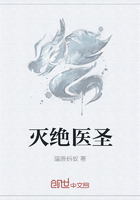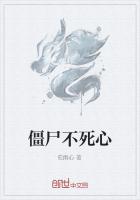(Castilleja coccinea) Figwort family Flowers - Greenish yellow, enclosed by broad, vermilion, 3-cleft floral bracts; borne in a terminal spike.Calyx flattened, tubular, cleft above and below into 2 lobes; usually green, sometimes scarlet; corolla very irregular, the upper lip long and arched, the short lower lip 3-lobed; 4 unequal stamens; pistil.
Stem: 1 to 2 ft.high, usually unbranched, hairy.Leaves: Lower ones tufted, oblong, mostly uncut; stem leaves deeply cleft into 3 to 5 segments, sessile.
Preferred Habitat - Meadows; prairies; moist, sandy soil;thickets.
Flowering Season - May-July.
Distribution - Maine to Manitoba, south to Virginia, Kansas, and Texas.
Here and there the fresh green meadows show a touch of as vivid a red as that in which Vibert delighted to dip his brush.
"Scarlet tufts Are glowing in the green like flakes of fire;The wanderers of the prairie know them well, And call that brilliant flower the 'painted cup.'"Thoreau, who objected to this name, thought flame flower a better one, the name the Indians gave to Oswego tea; but here the floral bracts, not the flowers themselves, are on fire.Lacking good, honest, deep green, one suspects from the yellowish tone of calices, stem, and leaves, that this plant is something of a thief.That it still possesses foliage, proves only petty larceny against it, similar to the foxglove's (q.v.).Caterpillars of certain checker-spot butterflies in turn prey upon Castilleja.
Under cover of darkness, in the soil below, the roots of our painted cup occasionally break in and steal from the roots of its neighbors such juices as the plant must work over into vegetable tissue.Therefore it still needs leaves, indispensable parts of a digestive apparatus.Were it wholly given up to piracy, like the dodder, or as parasitic as the Indian pipe, even the green and the leaf that it hath would be taken away from this slothful servant.
But even without honest leaf green (chlorophyll), we know that plants as low in the scale as fungi often take on the most brilliant of yellows and reds.In the painted cup the bracts, which enfold the insignificant yellowish cloistered flowers like a cape, render them great service in attracting the ruby-throated hummingbird by donning his favorite color.No lip landing place is provided for insects, as in other members of the figwort family dependent on bees; although bumblebees, which desire one, and butterflies, which suck with their wings in motion, may be rarely caught robbing the short tubes.Among the wild flowers, only the columbine, with an almost parallel blooming season, rivals the painted cup for the bird's beneficent attentions.The latter flowers at about the time the ruby-throat flashes northward out of the tropics to spend the summer.Professor Robertson of Illinois says, "In 1886 the first hummingbird seen was on May 5, visiting the Castilleja."WOOD BETONY; LOUSEWORT; BEEFSTEAK PLANT; HIGH HEAL-ALL{Pedicularis Canadensis) Figwort family Flowers - Greenish yellow and purplish red, in a short dense spike.Calyx oblique, tubular, cleft on lower side, and with 2 or 3 scallops on upper; corolla about 3/4 in.long, 2-lipped, the upper lip arched, concave, the lower 3-lobed; 4 stamens in pairs;1 pistil.Stems: Clustered, ******, hairy, 6 to 18 in.high.
Leaves: Mostly tufted, oblong lance-shaped in outline, and pinnately lobed.
Preferred Habitat - Dry, open woods and thickets.
Flowering Season - April-June.
Distribution - Nova Scotia to Florida, westward to Manitoba, Colorado, and Kansas.
When the Italians wish to extol someone they say, "He has more virtues than betony," alluding, of course, to the European species, Betonica officinalis, a plant that was worn about the neck and cultivated in cemeteries during the Middle Ages as a charm against evil spirits; and prepared into plasters, ointments, syrups, and oils, was supposed to cure every ill that flesh is heir to.Our commonest American species fulfils its mission in beautifying roadside banks and dry, open woods and copses with thick, short spikes of bright flowers, that rise above large rosettes of coarse, hairy, fern-like foliage.At first, these flowers, beloved of bumblebees, are all greenish yellow; but as the spike lengthens with increased bloom, the arched, upper lip of the blossom becomes dark purplish red, the lower one remains pale yellow, and the throat turns reddish, while some of the beefsteak color often creeps into stems and leaves as well.
Farmers once believed that after their sheep fed on the foliage of this group of plants a skin disease, produced by a certain tiny louse (pediculus), would attack them - hence our innocent betony's repellent name.















